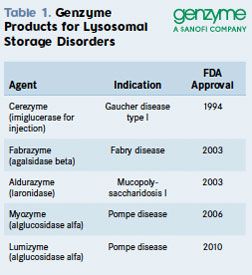Same Mission, New Role for Genzyme Executive: Head of Rare Diseases Committed to Patients
Rogerio Vivaldi, MD, has vivid memories of the first patient with Gaucher disease ever treated in Brazil with enzyme replacement therapy.
Rogério Vivaldi, MD
Rogério Vivaldi, MD, has vivid memories of the first patient with Gaucher disease ever treated in Brazil with enzyme replacement therapy (ERT ). The patient was a shy 14-year-old boy struggling to play soccer, even though he had bone pain, an enlarged spleen, and bleeding events due to low platelet levels.
After several months of ERT, the patient had grown nearly 22 inches, his spleen and platelets were normal, and he was no longer hesitant to speak.
Today, that patient is in his early 30s, is healthy, and recently was married.
And Vivaldi, the physician who treated him, is now Head of Rare Diseases at Genzyme Corporation, which developed the drug that altered the lives of both the patient and his doctor.
“He had his life transformed by therapy, but at the same time that transformed my life because it showed me that good medicines could really transform and change the natural history of a disease,” said Vivaldi in an interview during ISGH/ASHG 2011, where Genzyme commemorated its 30-year history with a dinner symposium.
“After 20 years, it’s amazing how people sometimes even forget what the disease was,” he said. “I still remember the very difficult days when I was accompanying people to funerals because not everybody was succeeding, or because not everybody had therapy.”
Vivaldi, who launched and built Genzyme Brazil, is focused these days on the next chapter in the company’s history. He has been with Genzyme for 16 years, attaining his current executive team position in November.
Since its founding in 1981, the Cambridge, Massachusetts- based company has grown from a fledgling biopharmaceutical start-up with 21 employees to a company with a worldwide workforce of approximately 10,000 people and $4.05 billion in revenues. Sanofi-aventis acquired Genzyme in April.

One priority facing Vivaldi is remedying manufacturing issues that have affected the supplies of 2 drugs in its product line for patients with lysosomal storage disorders: Cerezyme® (imiglucerase for injection), the foremost ERT for type I Gaucher disease, and Fabrazyme® (agalsidase beta), used to treat Fabry disease.
The company has informed healthcare providers that Cerezyme supplies will be tight through January, with dosing schedules affected for some patients, and that supplies of Fabrazyme will be “significantly restricted” while the company works to get a new manufacturing facility in Framingham, Massachusetts, operational.
The plant is expected to begin producing Fabrazyme during the first quarter of 2012, enabling the company to improve production of Cerezyme, which now shares a facility with Fabrazyme.
The production process for ERT s is challenging, Vivaldi noted. Cerezyme, for instance, is produced in bioreactors containing Chinese hamster ovary cells that express the needed enzymes from amplified human DNA (Clin Invest 2011;1(2):285—293).
“It is very complex when you do biologic manufacturing because (the output) depends on the cell,” said Vivaldi. “The cells are the ones that are producing the proteins. You never know exactly how much will be produced.”
Vivaldi said Genzyme remains committed to developing drugs for patients with rare genetic diseases, and that the company maintains charitable programs for those who cannot afford the therapeutics.
“This is a commitment beyond the supplies, a commitment that we will continue to do what we did for years,” said Vivaldi.
Although the number of patients with such disorders is minuscule compared with those whose diseases are broad public health problems, their needs are pressing and deserve attention, Vivaldi indicated.
“Someone who has a rare disease has the same right as someone who has malaria or tuberculosis,” he said. “…These patients deserve to be treated.”



